There are approximately 300 species of woodpeckers throughout the globe, with around 22 of them located in the United States.
Across Indiana, there are seven different species of woodpeckers. The majority of these seven species dwell in the state all year, while a handful only visits on occasion.
Downy Woodpecker, Pileated Woodpecker, Northern Flicker, Red-headed Woodpecker, Red-bellied Woodpecker, Yellow-bellied Sapsucker, and Hairy Woodpecker are the seven woodpecker species spotted in Indiana.
As you would expect, we’ll go through all seven of Indiana’s woodpecker types within this post.
Each variety will include a photo to assist you in recognizing it, some information including its size, a brief description with some amusing facts, and information about where and how to get it in Indiana.
Ensure that you read all the way to the conclusion to learn how and when to entice woodpeckers to your backyard.
| Image | Name |
|---|---|
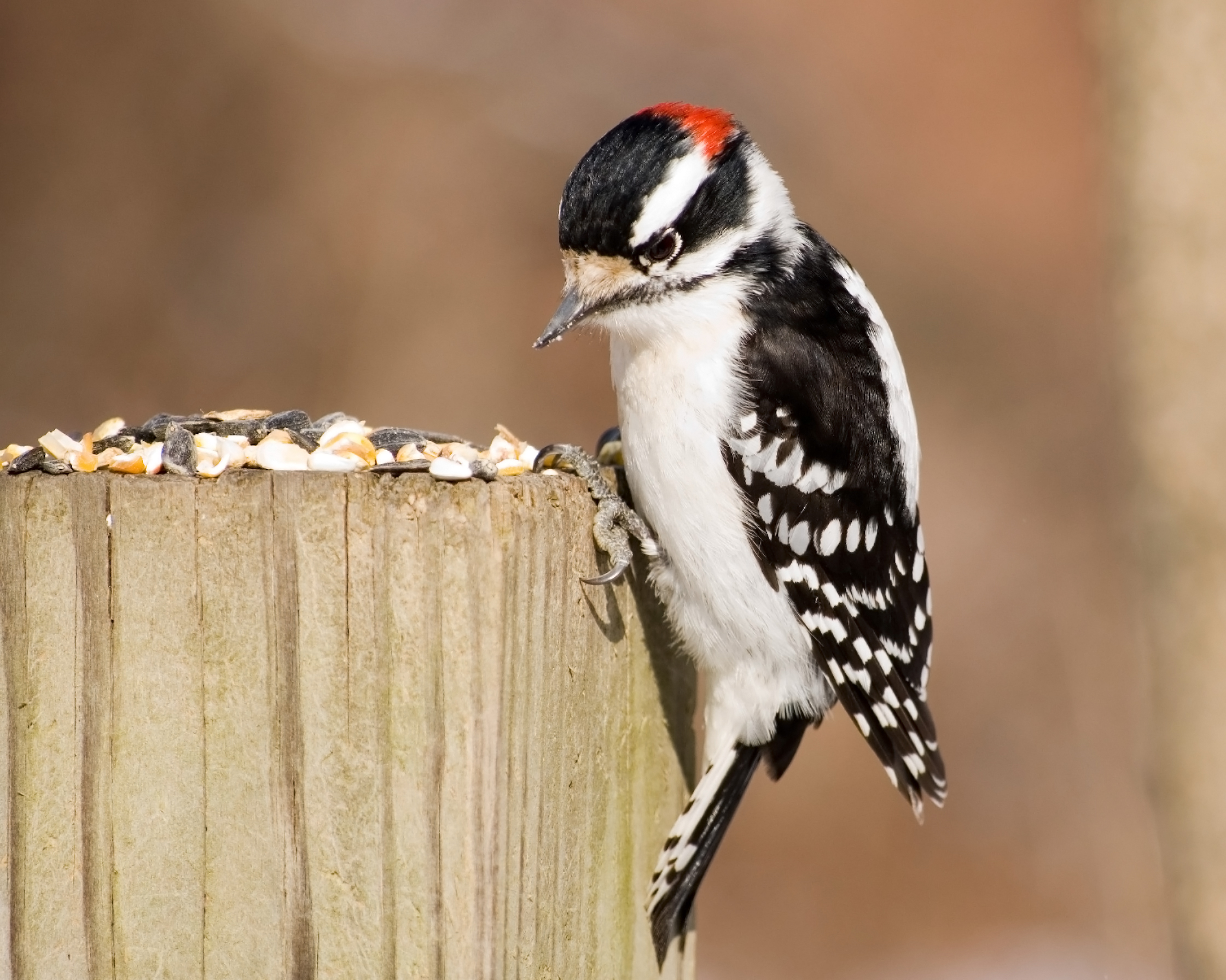 | Downy Woodpecker |
 | Red-bellied Woodpecker |
 | Pileated Woodpecker |
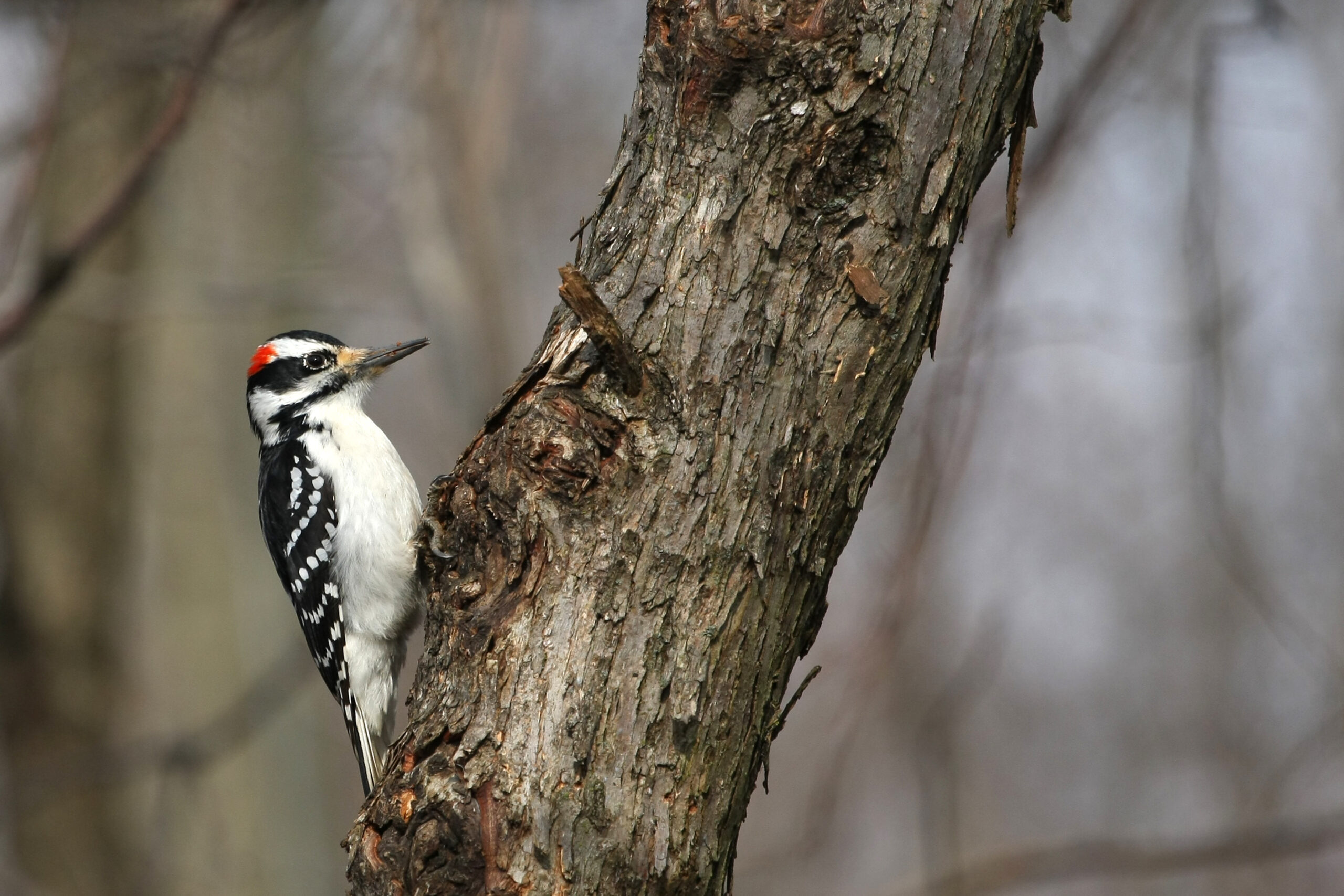 | Hairy Woodpecker |
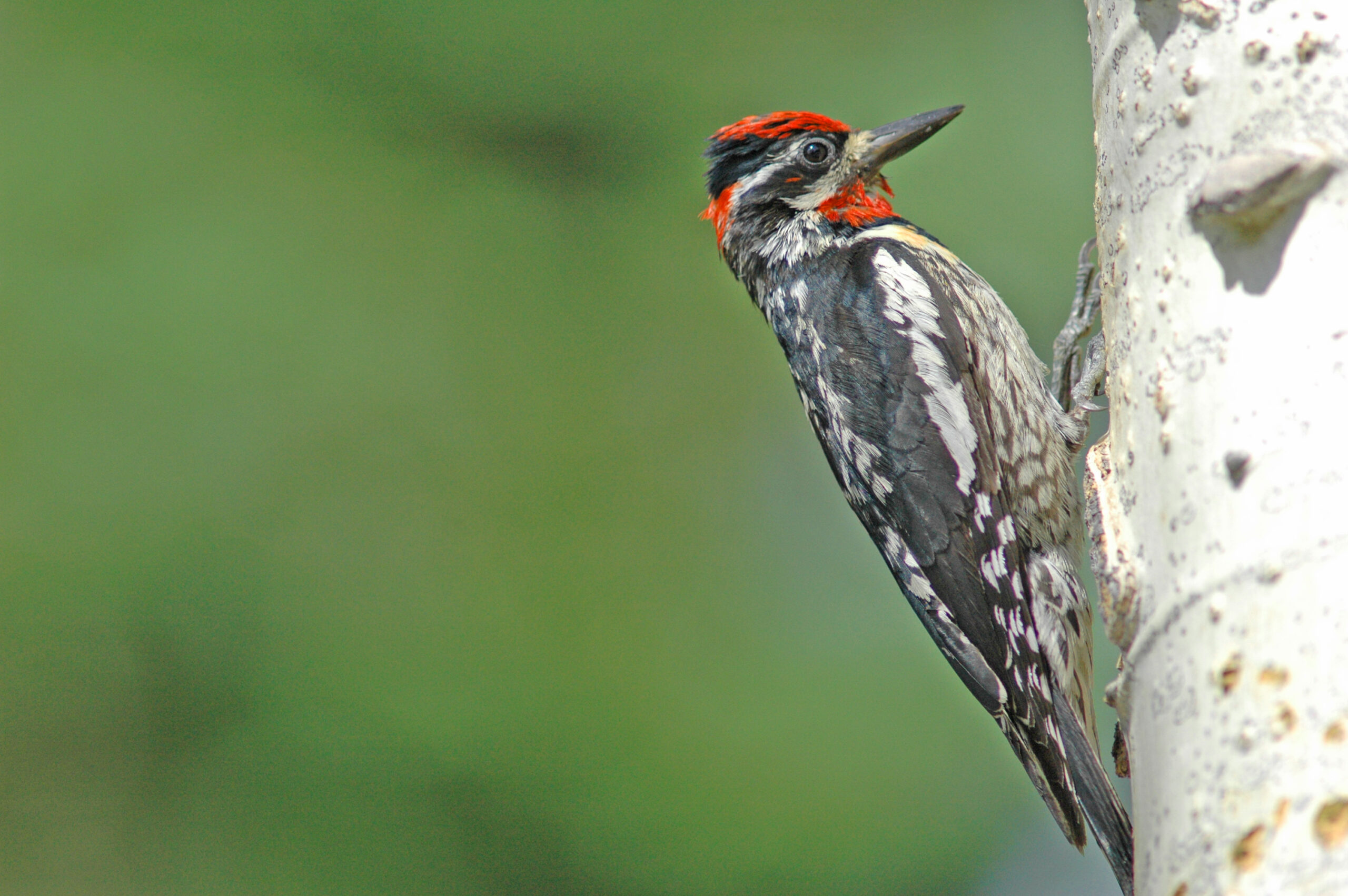 | Yellow-bellied Sapsucker |
 | Northern Flicker |
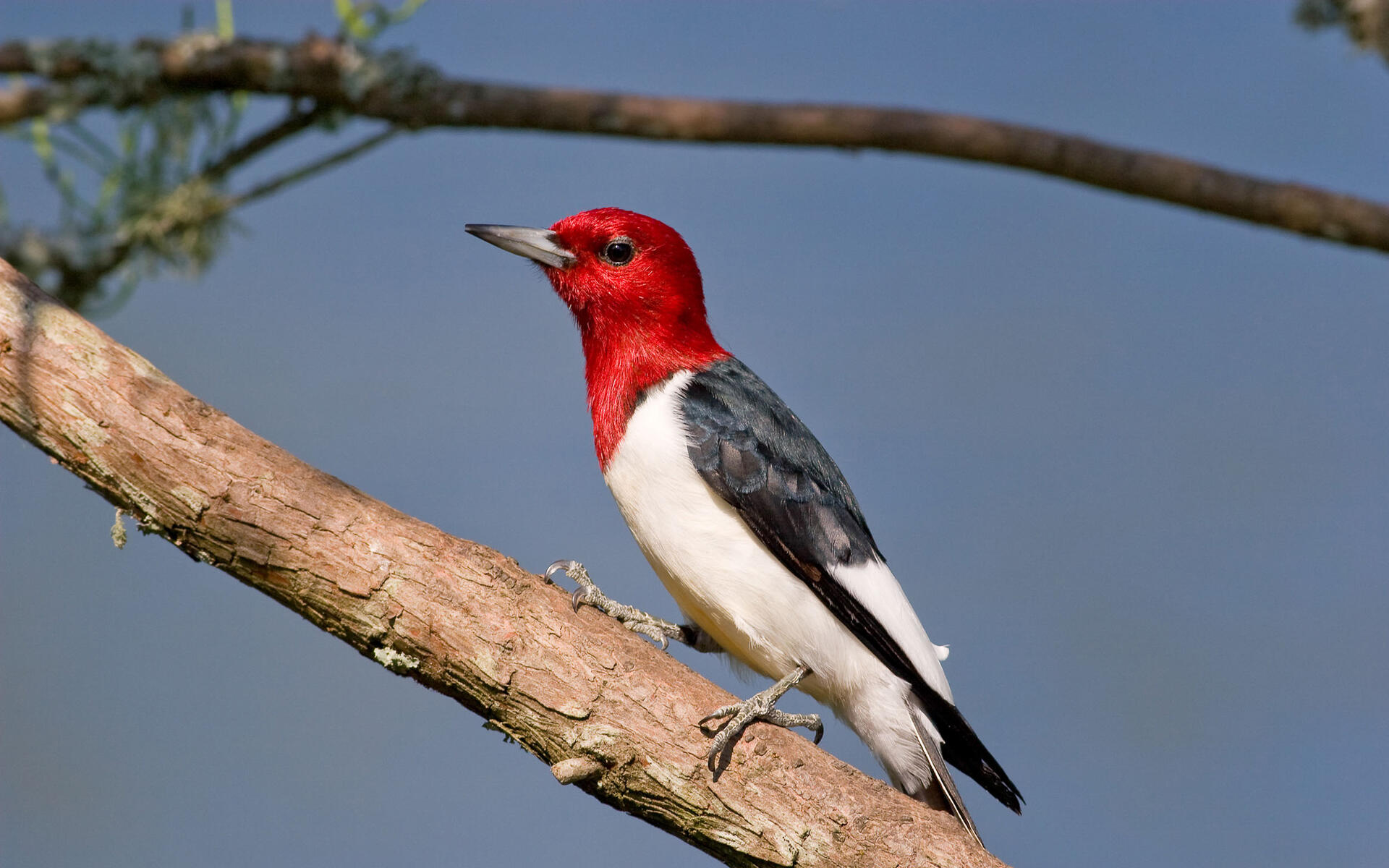 | Red-headed Woodpecker |
Types of Woodpeckers in Indiana
1. Downy Woodpecker

The downy woodpecker is the tiniest woodpecker across Indiana (and the majority of the United States) and is widespread throughout North America.
It is easy to identify due to its small size. It’s almost certainly the most frequent woodpecker across Indiana. This is due to its audacity and lack of fear of humans.
Furthermore, it does not migrate but remains in its habitat all year round. Thus you may see these woodpeckers also during Indiana’s brutal winters.
This little bird may be found pretty much anywhere. It may be found in the countryside, cities, suburban yards, and wilderness regions.
| Scientific name | Dryobates pubescens |
| Weight | 0.76 to 0.99 oz |
| Size | 7.0 to 7.4 in long |
| Wingspan | 10 to 12 in |
During the winter season, they congregate with some other birds, including nuthatches and chickadees, for protection and food.
They make their nests in the trees’ cavities, wherein they nurture their offspring. Their ecological area might fluctuate with the weather, but they do not wander far.
Downy woodpeckers have white and black striped wings and a white breast. Adult males are distinguished from females by a beautiful red crest on the back of their skulls.
Install a suet feeder around your backyard if you enjoy watching the activity of these small woodpeckers throughout Indiana. They come here frequently.
Food
Due to their tiny size, they may seek food by sitting on little plant stalks. They’re also tiny enough even to build nests mostly in wood paneling of houses, greatly to the chagrin of householders.
2. Red-bellied Woodpecker
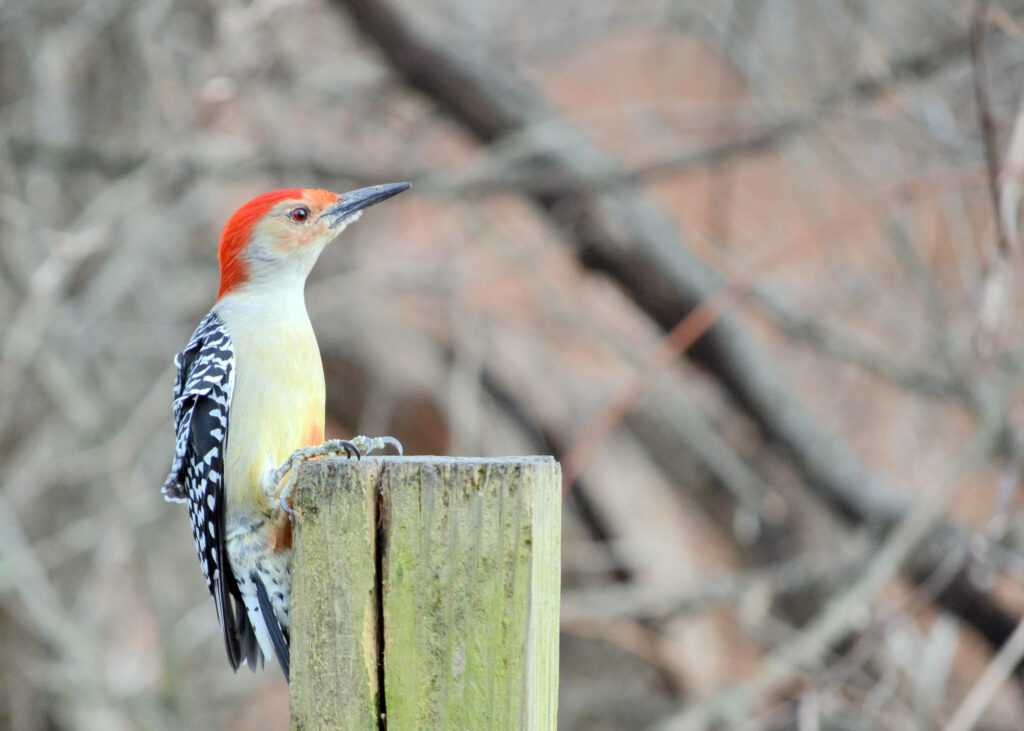
Red-bellied Woodpeckers can be observed throughout entire Indiana, although they are most numerous in the winters.
Red-bellied Woodpeckers are similar to Red-headed Woodpeckers in appearance and have red crowns, whereas they are considerably smaller. Females have such a red nape but don’t have a red crown.
They get a faint crimson abdomen that might be difficult to see. Their backs are marked with the typical black and white patterns.
Red-bellied Woodpeckers are frequently spotted around bird feeders, particularly if you live anywhere near forested regions. They have a characteristic loud rolling cry, so you’ll usually hear them prior to seeing them.
Food
Red-bellied Woodpeckers consume insects, spiders, grass seeds, fruit, and nuts. They would also consume nestlings on occasion.
They build their nests on dead trees and might even utilize the same one year after year. They hatch 4 to 5 white eggs on a nest of wood pellets.
The tongue of the Red-bellied Woodpecker stretches nearly 2 inches beyond the bill and therefore is barbed at the apex, which assists grab food from deep cracks when combined with sticky spit.
| Scientific name | Melanerpes carolinus |
| Weight | 2.0 to 3.3 ounces |
| Size | 9.4 to 9.7 in |
| Wingspan | 13.1 to 16.6 in |
Habitat
Red-bellied Woodpeckers are generally widespread across eastern forests and woodlands. However, they can also be found at bird feeders.
Red-bellied Woodpeckers can flock to your garden for suet. Therefore, try an upside-down suet feeder that keeps bullies and squirrels species at bay. These suet cakes are available in quantity for a lower price.
Furthermore, additional Red-bellied Woodpeckers entice your backyard by placing black oil sunflower seeds. You have two feeders in just one when combined with suet inside a fantastic combo hopper and suet feeder.
They may also be found in hummingbird feeders, where they feast on the fruit. Planting natural berry plants like hawthorn and mountain ash can also bring these birds to your backyard.
3. Pileated Woodpecker

This woodpecker spends the entire year across Indiana. They frequently build their nests inside utility poles or in the twigs and branches of towering dead trees.
Carpenter ants remain their favorite diet, which is why they drill long rectangular channels into the tree or wood to obtain them.
They will also consume nuts and berries, as well as berries of the poison ivy plant. They may forage for food on the land occasionally. However, they prefer to stay mostly in trees.
These odd birds are mostly white and black, but their beautiful red crest stands out. Males get a red stripe along the sides of their faces as well. These are massive species, about the proportions of crows, and Indiana’s largest woodpeckers.
| Scientific name | Dryocopus pileatus |
| Weight | 9 to 14 oz |
| Size | 16 to 18 in |
| Wingspan | 30 to 32 in |
The pileated woodpecker is not a migratory bird. It spends its adult existence in the same location. If the eggs drop from the nest, they will relocate it.
The comic bird Woody Woodpecker has been most probably influenced by this species. When you match the cartoon to these species, you can easily perceive the similarities.
Food
Pileated Woodpeckers visit yard feeders in search of suet. In addition to suet, hulled sunflower seeds, peanuts, mealworms, and black oil sunflower seeds, they consume. In a bid to entice a mating partner, consider building a nest box.
4. Hairy Woodpecker
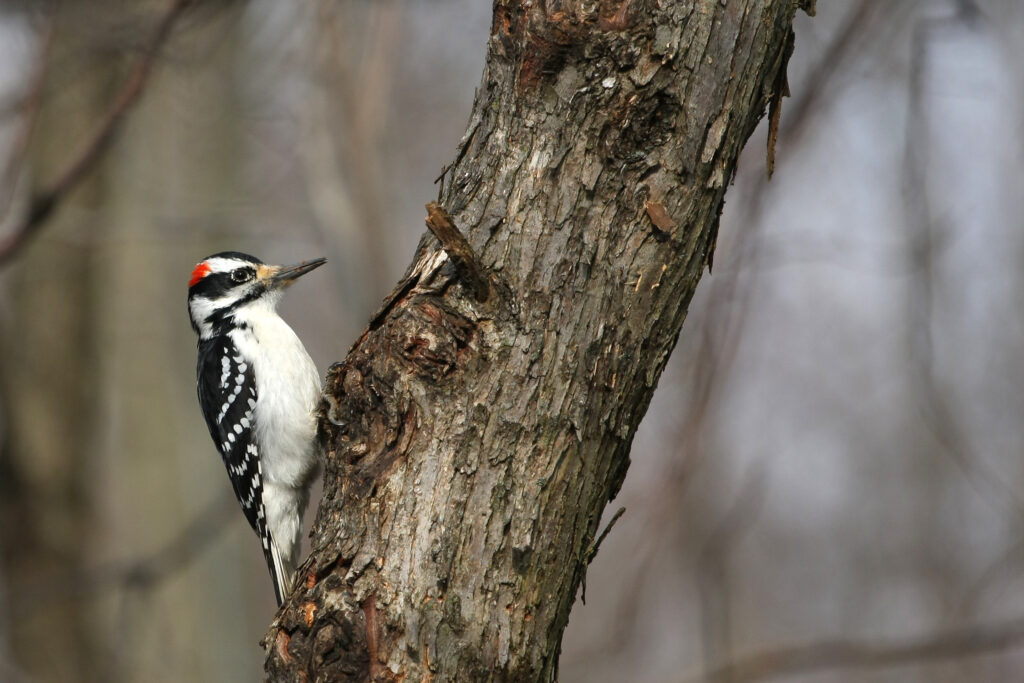
Hairy woodpeckers resemble downy woodpeckers; however, they can be distinguished by their larger size and longer beak. Their beaks are about the same length as their heads.
They are completely black and white. Adult males are distinguished from females by a little red mark on the back of their heads.
These lovely woodpeckers are not quite as prevalent as their relative, the downy woodpecker, across Indiana. These woodpeckers continue to be found in parks, cemeteries, suburban neighborhoods, and other peaceful forested or open locations. They also frequent suet feeders in residential backyards.
| Scientific name | Picoides villosus |
| Weight | 1.4 to 3.4 oz |
| Size | 7.4 to 7.6 in |
| Wingspan | 12 to 17 in |
As though it is relative to the downy woodpecker, Hairy woodpeckers do not travel during sg in the winter season and remain in the exact location throughout the year. They reside in the cracks of downed trees.
Following research published in the Journal of Wildlife Management, they prefer newly burned woodlands because there is sufficient food for them there.
Because of habitat degradation, numbers have begun declining in the past few decades. They are indeed endangered by invasive birds like European starlings, which take over their nesting grounds.
Food
Hairy Woodpeckers thrive from squirrel-proof suet feeders having a cage to keep larger birds out. A big supply of suet cakes provides a more cost-effective option.
Additionally, black oil sunflower seeds attract more Hairy Woodpeckers to your home, so when paired with suet in great suet and hop feeders.
5. Yellow-bellied Sapsucker

The yellow-bellied sapsucker dwells mostly in the eastern half of the United States and typically migrates south during the winter season. However, it will remain in certain northern states, including Indiana, throughout the year.
The majority of these species are white and black, having white abdomens and white and black banded backs and wings.
The male’s neck is brilliant red, making it easy to distinguish him from the ladies. In contrast, females have a white throat. Males and females both seem to have crimson foreheads.
Females get a slight golden color on their belly, but it may be so subtle that you may not observe it.
| Scientific name | Sphyrapicus varius |
| Weight | 1.4 to 1.9 oz |
| Size | 7.2 to 8.7 in |
| Wingspan | 13.4 to 15.9 in |
These sapsuckers use their beaks to dig small holes in the tree and afterward wait for the tasty sap to flow. They lick it up, as do any insects that creep around and become entangled in the sap.
They may be seen visiting your yard suet feeder; however, they prefer to stay in the woods. They aren’t as daring compared to some of their woodpecker relatives.
Young deciduous woodlands are frequently seen on maple or birch trees, wherein they form orderly rows of sap wells to feast on.
However, not commonly seen at bird feeders, Yellow-bellied Sapsuckers might occasionally come for suet, so install squirrel-proof suet feeders and experiment with peanut butter suet or mealworm suet.
6. Northern Flicker

The striking northern flicker woodpecker may be found around cemeteries and playgrounds throughout Indiana, also in open environments near trees.
They approach suet feeders within suburban and urban yards on a regular basis. Unlike other woodpeckers, they prefer to hunt on the land instead of within the trees.
They’re one of Indiana’s most abundant woodpeckers, but they aren’t all the same.
Males, females, and juveniles have different morphologies depending on where species live. They’re brown, featuring black patterns around the edges.
The lower parts of the wings and tails are yellow throughout the eastern part of the United States but red mostly on the western edge. These are Indiana’s 2nd biggest woodpeckers.
| Scientific name | Colaptes auratus |
| Weight | 4.1 to 6.5 oz |
| Size | 1o to 12 in |
| Wingspan | 16.5 to 20.1 in |
Certain individuals get a red or black stripe over their cheeks, and many have a large, black crescent moon over their thorax. Some individuals have red spots on the top of their skulls. Some of them possess grey heads.
Northern flicker sounds can be heard for considerable distances in the springtime. They get a unique call; if you recognize it, it’s simple to identify if they’re nearby.
They predominantly consume ants, although they will also consume termites, caterpillars, and beetles. They’ve already been seen snatching young bats as they exit their nests.
Flickers originating from northern climates, including Canada and Alaska, migrate to warmer locations during the winter, but these woodpeckers remain around Indiana all year.
Food
Northern Flickers prefer birdbaths over bird feeders, so putting in something like a magnificent platform fountain or a hot birdbath during the winter is your best option.
Place suet baskets, large feeders, or platform dispensers containing hulled sunflower seeds, millet, black oil sunflower seeds, suet, safflower seeds, peanuts, and crushed corn to tempt them.
You can also design a flicker-friendly nesting box to lure a breeding pair and produce berry-producing plants such as hackberries, elderberries, bayberries, or grapes.
7. Red-headed Woodpecker
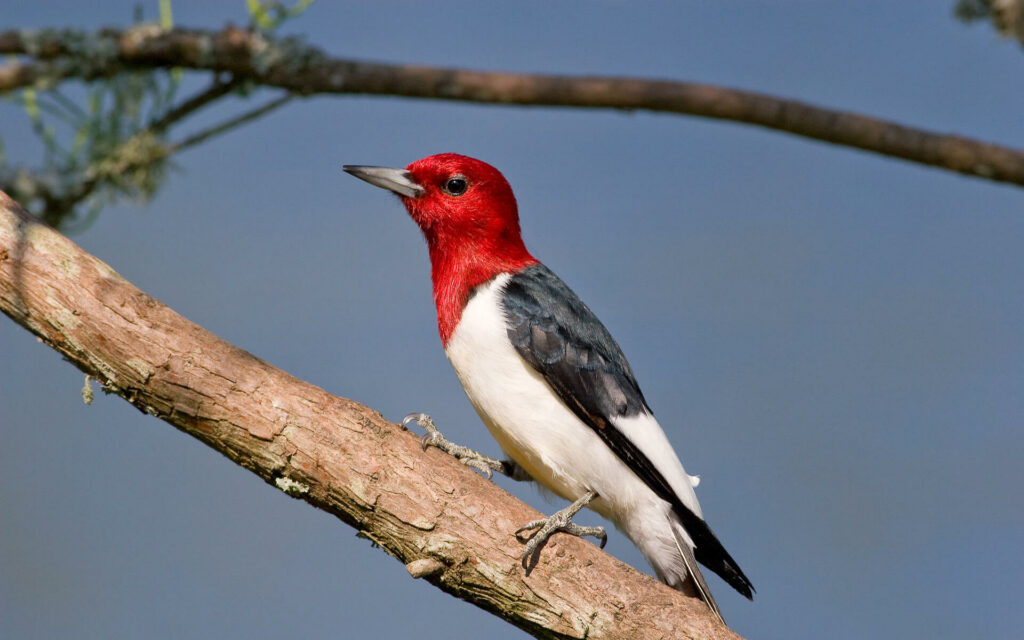
Red-headed woodpeckers are visually appealing birds. They possess white bodies and complete black wings with a large white spot. Topping it all off is a rich, dark crimson head and throat that are so bright it appears to be velvet.
The baby birds are brownish-black, with dull red faces having white markings on their wings.
They do not traverse the Rocky Mountains towards the west; however, they could be observed all the way east, between Canada to Florida.
Throughout Indiana, these woodpeckers may be found all year. During the winter, you may encourage them to your backyard by providing them suet or citrus.
| Scientific name | Melanerpes erythrocephalus |
| Weight | 2.0 to 3.2 oz |
| Size | 7.6 to 9.1 in |
| Wingspan | 16.2 to 16.8 in |
It is one of the very few birds that store food for the cold season. They put seeds and nuts into tree cracks or bark. They’ve even been found to hide food behind roofs.
They also hunt by catching insects from the sky. That is remarkable for a woodpecker.
Check out this article on Types of Woodpeckers in Iowa.
Conclusion
Throughout Indiana, there are seven different species of woodpeckers. And if you are fortunate, you might be able to experience them all. The nicest part about some of these birds would be that they live in the state all year.
You could see single or multiple two woodpeckers if you place a few of their favorite delectable treats in your bird feeder.
Finally, your backyard may become a safe sanctuary for all of these lovely species.
FAQ
What is Indiana's largest woodpecker?
The pileated woodpecker represents one of Indiana’s largest and most stunning woodland birds. This bird is almost the size of a crow, featuring prominent white lines across its neck and beneath its wings, and it is crowned with a brilliant red crown.
Last Updated on March 22, 2023 by Lily Aldrin
